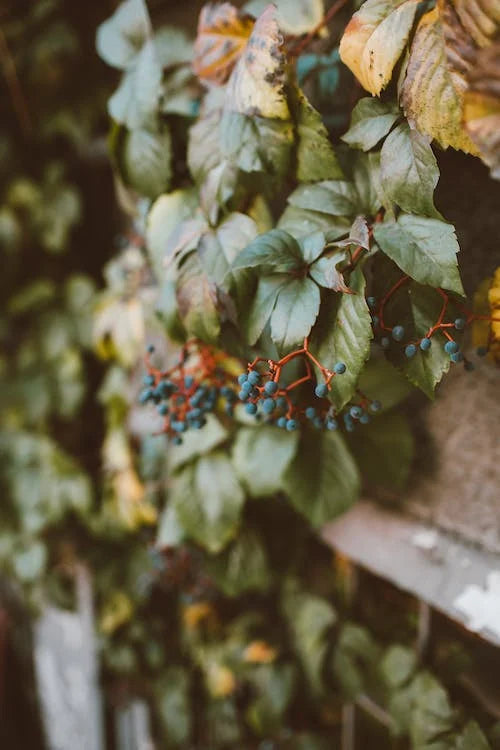
If you have been exposed to a toxic plant and are concerned for your health and safety, please call 911 or contact the US National Poison Control Center or in Canada call 1-844-764-7669.
Let’s start with this—there are no “bad” plants. There are, however, plants that are growing where you don’t want them to and plants that might be dangerous to you. So while we’re fans of all plants, we do want to be aware of which ones may be toxic and how to deal with them. Some of the most common toxic plants may surprise you—a few of them are regular features in many lawns and gardens across the US and Canada. By learning about common toxic plants, being able to spot the common toxic plants in your garden, and knowing how to manage them when they do appear, you’ll be a better, safer gardener with a healthier garden.
Let’s start with three common toxic plants that aren’t likely to appear in your garden, but are important to understand. Poison ivy, poison oak, and poison sumac are famous for causing horribly itchy and painful skin reactions in many people. Toxic to the touch, everyone should know how to identify them and what to do if you do come in contact with them. Take a moment, learn a bit about these plants, and how to keep yourself safe from them. They’re found all over North America, so you might be glad that you did!
Moving on to plants you may find in your garden—there are far too many to list them all, but here are some common toxic plants that appear in many gardens either intentionally or as a weed:
- Wild nightshades in various forms (Florida nightshade, American nightshade, and bittersweet nightshade are common names for many subspecies) are a common toxic plant in many parts of the country. With oval or diamond shaped leaves, brightly colored berries, and flowers that resemble those of the edible eggplant, wild nightshade seedlings and sprouts bear a strong resemblance to eggplant, tomato, and pepper plants when young. Birds can eat their colorful berries safely—and love to do so! However those same berries may attract young children or pets to whom these plants are toxic.

- Virginia creeper (Parthenocissus quinquefolia) is a vining plant that which may be grown as an ornamental or ground cover plant due to its rapid growth and ability to cover buildings, walls, and the like. This can cause problems on its own—it can cover trees and shrubs and kill them by blocking the sun, or cause structural problems when they grow into cracks in walls or houses. They’re also mildly toxic—the sap inside the stems and leaves can cause skin irritation or blisters in some folks. Be careful in handling or trimming Virginia creeper by wearing gloves and protective clothing and washing your hands carefully afterwards.

- English yew (Taxus baccata) and its close relative Canadian yew (Taxus canadensis; also referred to as “American yew”)are popular worldwide as hedge plants, and with good reason, their lovely, narrow leaves are a beautiful dark green color, which contrasts nicely with their bright red berries. While they can make an impressive backdrop or vertical accent in your garden, their berries are toxic to humans and pets, causing convulsions, paralysis, and even death. As with wild nightshades, birds love yew berries, but they pose a danger to the rest of us.

- Castor bean plants (Ricinus communis)are another popular garden ornamental that can be very toxic if ingested. The source of the poison ricin, castor bean plants are popular as decorative additions in many public parks and gardens. Their pollen may cause allergic reactions if inhaled, and their sap may cause painful rashes when it comes in contact with the skin. More concerning, however, is the toxicity of Castor beans themselves—the seeds of the plant contain the poison ricin, which can cause serious health problems or even death if ingested.

- Poison hemlock (Conium maculatum)is another common plant that appears as a weed in many gardens around the US and Canada. Originally imported from Europe as an ornamental, this plant now grows wild in many places across North America; it is frequently seen on roadsides and other untended land. Poison hemlock closely resembles its near relatives: Queen Anne’s lace and the carrot. This can lead to issues if it starts growing in your garden—every part of poison hemlock is toxic, to the point that just touching it may cause a strong and painful reaction. Ingesting it can be fatal, particularly in young children, so learning to identify poison hemlock is a must for any gardener.

So now that we know a bit about common toxic plants which may appear in your garden, what should you do about them? Well, that depends on a few things—your garden and garden goals, who lives with your or has access to your garden, and the nature of the plant itself. Again, there are no “bad” plants, but there are some plants that don’t belong where they are. Poison hemlock and wild nightshades should probably be removed carefully and thoroughly from any garden space, while you may want yew to remain with a few safety precautions in place. Teaching your children—and yourselves—to exercise reasonable caution around plants they’re not familiar with is wise, and of course you should never eat anything you can’t positively identify.
We hope this brief guide to common toxic plants helps you keep your garden a bit safer this season. If we missed something or you’d like to hear more, reach out and let us know. Gardzen is all about community and we love to hear from you!

Leave a comment